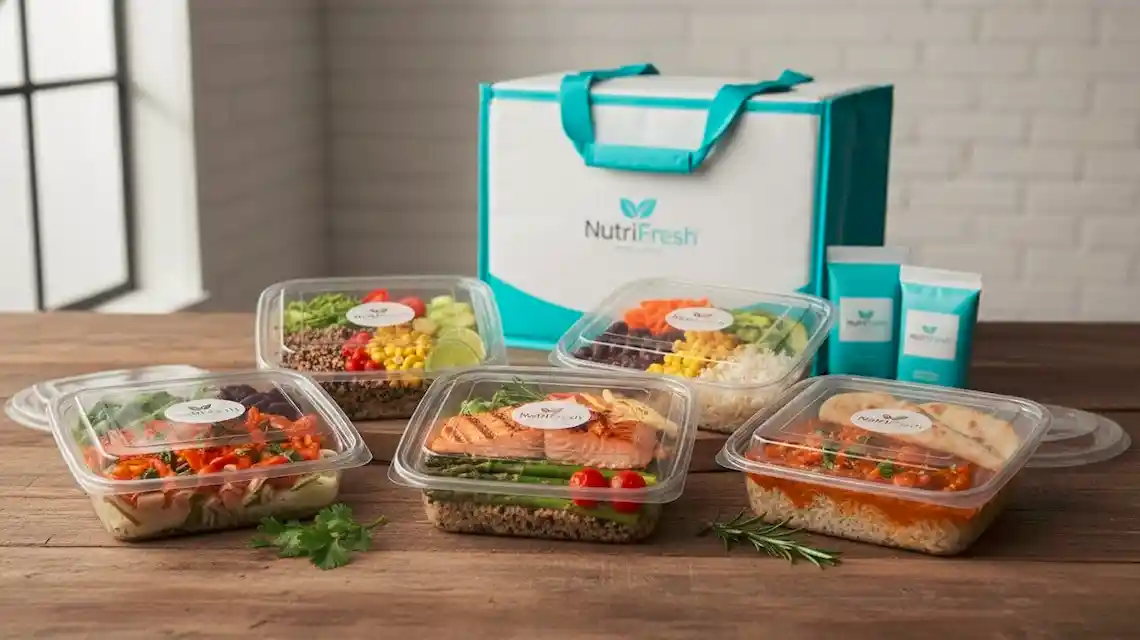Tired of the nightly scramble? The benefits of ordering a premade meal delivery go far beyond convenience. You get fully cooked meals sent to your door, you heat and eat. That simple model helps busy parents, students, young professionals, older adults, athletes, and people in recovery.
In this guide, you will see how these meals save time, reduce stress, support better eating, cut food waste, and help you control costs. You will also learn how to pick the right service and avoid common mistakes. If you want packed weeks to feel lighter and your dinners to feel effortless, keep reading. The goal is a kitchen routine that feels calm, steady, and doable on any schedule.
Top benefits of ordering a premade meal delivery
The quickest wins show up on day one. You open the fridge and dinner is ready in minutes. There is no guesswork, no chopping, and far fewer dishes. You regain mental energy that used to vanish at 5 p.m.
Think about your weekdays. Skip the store after work. You avoid the 45-minute cook-and-clean cycle. You stop doom scrolling menus. That shift restores time you can spend on family, workouts, or rest.
Consistency matters too. Meals arrive on a schedule, so your week has a rhythm. You stick to a plan because the plan is already at home. Less mess. Fewer decisions. More control.
Save hours each week without cooking or shopping
Meal planning eats time, even when you keep it simple. Premade options remove the planning step, the grocery trip, and most of the nightly work. Swap four dinners with heat-and-eat meals. That can free three to five hours. Picture Monday to Thursday. You come home, reheat, eat, and move on. Your evenings open up without the usual chaos.
No last-minute takeout, dinner is ready in minutes
Waiting for delivery can stretch into an hour. A premade meal heats in 3 to 8 minutes for most microwave options, or 10 to 15 in the oven. When your fridge holds ready plates, you skip the takeout app. The decision is easy. Heat, eat, and get back to your life. You still get flavor, just without the wait.
Fewer dishes and less kitchen cleanup
Cleanup is simple. One tray, one fork, a quick wipe of the counter. No pile of pots to soak. This helps if you have a small kitchen, a dorm room, or a shared space. You also save water and sponges over time. The routine feels light, which makes sticking with it easy.
Beat decision fatigue with a set weekly menu
A curated menu does the choosing for you. Pick your meals on Sunday, then drop them on a calendar. After work or class, you follow the plan and eat. Fewer choices mean less stress at the worst time of day. The routine becomes a habit, and habits remove friction.
Health and nutrition benefits you get right away
Food should help you feel steady and strong, not tired and hungry. Premade meals make better choices easier to repeat. Labels show you the numbers. Portions come set. You get a steady rhythm of protein, carbs, and fats that support daily energy.
When you remove the guesswork, you eat more consistently. That alone can improve how you feel during work, workouts, and sleep.
Balanced macros and calories without tracking
Most services print macros and calories on each meal. You see protein, carbs, fats, and total calories at a glance. That makes it simple to hit targets without logging every bite. Want 100 grams of protein per day? Choose two meals with 35 to 45 grams each, then add a snack. The math is easy and repeatable.
Portion control that supports weight goals
Fixed portions cut out guesswork. You eat the plate, then you are done. That helps prevent second helpings and overfull nights. Many people report steadier energy and fewer late-night snacks when portions stay consistent. Your hunger signals get clearer when meals have balanced sizes.
Dietitian-designed options for many diets
Menus often include high protein, keto-friendly, plant-based, gluten free, dairy free, and low sodium choices. Read allergen panels and look for clear labels. If sustainability or animal welfare matters to you, scan for organic or humane claims. A good service explains what each label means so you can pick with confidence.
Fewer ultra-processed snacks, more nutrient-dense meals
When a real meal is ready, you skip the chips and random snacks. Plates with lean protein, fiber-rich carbs, and colorful vegetables leave you full and satisfied. For example, try chicken with roasted broccoli and quinoa, or tofu with brown rice and mixed peppers. You get a solid meal that keeps you going.
Money talk: the real cost and value
Price matters, but value tells the full story. Compare your total spend for similar meals at home, at a cafe, or from delivery apps. Add waste and impulse buys to that math. Then look at time saved, which carries real value when your day is packed.
A plan also gives you a weekly spend you can predict. That stability helps you manage money without constant effort.
Compare per-meal cost to groceries and takeout
Many premade meals land in the 8 to 14 dollar range per serving, depending on ingredients and plan size. That often beats app-based takeout, which can run 15 to 25 dollars with fees and tips. Compared to a balanced home-cooked plate with similar quality, the price is often close once you add extras and waste.
Less food waste and fewer impulse buys
How often do greens spoil in the crisper? Set portions reduce that. You buy the meals you plan to eat, then you eat them. That cuts waste over a month, which adds up. You also skip impulse snacks at the store, a sneaky drain on the budget. Cleaner habits save money.
Predictable weekly budget you can control
Meal plans show your spend before the week starts. You can skip a box, pause, or change your plan size. Watch for seasonal menus and bundles that lower price per meal. Staying within budget feels easier when your meals are pre-paid and your fridge is stocked.
Save on work lunches and time between meetings
A ready lunch in the office fridge beats a 20-minute walk to a cafe, plus the wait. You save money on each meal and keep your focus. Heat, eat, and return to tasks with a clear head. Over a month, that habit can free hours and trim your lunch spend.
How to choose and use a premade meal service
A good service fits your taste, goals, and budget. It also works with your schedule, your storage, and your cooking tools. A few smart moves help you get the most from every box.
Plan your first order with a clear goal. Track what you eat, how long it takes, and how you feel.
Match the menu to your goals and taste
Start with calories and protein targets. If you lift, choose higher protein. If you want lighter dinners, aim for moderate calories with lots of veggies. Pick cuisines you enjoy, like Italian, Thai, or Tex-Mex. Try a mix of safe picks and one new dish to keep things interesting.
Check ingredients, labels, and sourcing
Read the ingredient list like a grocery label. Look for whole foods you recognize and clear allergen notes. Check sodium and added sugar if those matter to you. If you care about organic or humane claims, look for verified labels and ask questions. Transparency builds trust.
Look at delivery schedule, packaging, and storage
Delivery day should match your weekly flow. Cold packs keep meals safe in transit, and recyclable packaging reduces clutter. Check fridge life, often 4 to 7 days, and freeze a few meals for later. Follow reheating tips on the label for best texture, whether microwave, oven, or skillet.
Start small, stack promos, and test skip features
Begin with a 6 to 10 meal box to see what you like. Use first-week deals and bundles to lower the cost. Try the app tools for skips, pauses, and swaps, then set a reminder before the next billing date. You stay in control, and you only buy what you will eat.
Conclusion
The benefits of ordering a premade meal delivery are simple and real. You save time, eat well, spend smarter, and feel less stress at the end of the day. To get started, set a budget, pick one or two services, order a small box, and track your time saved and energy for seven days. Notice how your evenings feel when dinner is handled.
Make this the year you simplify meals without giving up taste. Smart planning today can make healthy eating feel easy in 2025. Your next plate is only a few minutes away.
Related post:
Benefits of Ordering a Premade Meal Delivery FAQs:
How much time can premade meals actually save me?
Most meals heat in 3 to 10 minutes. You skip shopping, prep, and cleanup, which often saves 5 to 7 hours per week.
Are premade meal deliveries healthier than takeout?
Often, yes. You get labeled nutrition, balanced portions, and fewer hidden oils or sugars compared to many takeout options.
Will I spend less than cooking or ordering in?
It can be cheaper than frequent takeout, and pricier than basic home cooking. Savings grow when you count time saved and reduced food waste.
Do these meals help with portion control and calorie goals?
Yes. Meals come pre-portioned, with clear calories and macros. This makes tracking easy and helps avoid overeating.
Can I meet specific diets or allergies with premade meals?
Most services offer options like high protein, low carb, vegetarian, vegan, or gluten-free. Always check ingredient lists and allergen notes before ordering.
How fresh are the ingredients?
Meals are typically made in certified kitchens, then chilled and sealed. Many use fresh produce and proteins, not shelf-stable fillers.
Is the food frozen or refrigerated?
Both exist. Chilled meals often taste fresher. Frozen meals last longer and reduce waste. Pick based on your schedule and storage space.
How long do premade meals last in the fridge?
Most keep 3 to 5 days when refrigerated. Frozen options can last weeks. Always follow the label for safe storage.
What about taste and texture after reheating?
Quality varies by dish and cooking method. Saucy dishes and braises reheat best. Crisp items do better in an oven or air fryer than a microwave.
Do these meals reduce food waste?
Yes. You only receive what you eat, so there are fewer leftover ingredients. Sealed portions also extend shelf life.
How does meal delivery support fitness or weight loss?
Consistent portions, clear macros, and protein-forward options simplify planning. You can align meals with training days or calorie targets.
Is it good for families or picky eaters?
Many services offer family packs and kid-friendly classics. Mix a few staples, like pasta or tacos, with new flavors to keep everyone happy.
What should I look for on the label?
Check calories, protein, fiber, sodium, and added sugars. Review allergens, heat instructions, and best-by dates before you buy.
Are there hidden fees with meal plans?
Look for shipping costs, minimum order sizes, and cancellation rules. Many plans let you skip weeks without penalty if you do it on time.
How eco-friendly is the packaging?
Most brands use recyclable cardboard and liners. Gel packs may be reusable or recyclable, but check local rules. Consolidate deliveries to cut waste.
Can I customize meals or swap sides?
Many menus allow swaps, like choosing a different side or protein size. If not, pair the entree with a quick salad or steamed veggies at home.
What reheating method works best?
Follow the label first. For better texture, use an oven or air fryer for 5 to 12 minutes. Use the microwave for speed.
How do premade meals help with busy workweeks?
You remove decision fatigue and avoid last-minute takeout. Reliable options on hand keep your routine steady and your budget in check.
Will this help older adults or new parents?
Yes. No chopping or heavy cleanup, and consistent portions support steady nutrition. Delivery means fewer trips to the store.
How do I pick the right service for me?
Start with your top priority: budget, taste, or nutrition. Order a small box, try a few cuisines, and track what you actually finish. Adjust from there.




 Health Benefit of Sesame Seed
Health Benefit of Sesame Seed  Healthiest Breakfast Cereal for Children
Healthiest Breakfast Cereal for Children  Vegan Oil Free Mayonnaise Recipe
Vegan Oil Free Mayonnaise Recipe  Nutrition to Enhance Athletic Performance
Nutrition to Enhance Athletic Performance  Tasty Healthy Low Cost Meals Recipes
Tasty Healthy Low Cost Meals Recipes  Gluten Free Food Options
Gluten Free Food Options